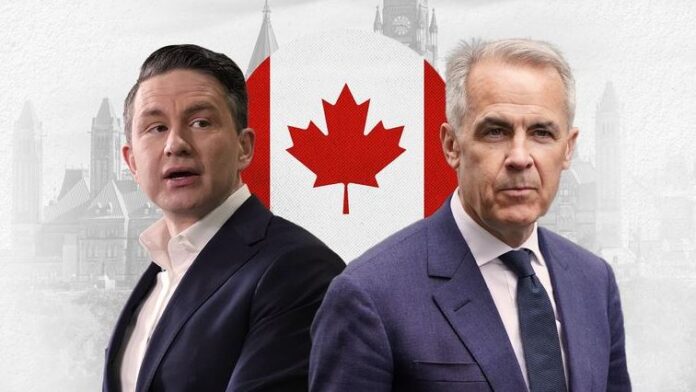As Canadians prepare to vote in the federal election on April 28, 2025, the race is dominated by U.S. President Donald Trump’s aggressive trade policies and provocative rhetoric, which have reshaped the political landscape. Here’s what you need to know about the election, its key players, and the critical issues at stake.
How the Election Works
In Canada, voters don’t directly choose the prime minister. Instead, they elect Members of Parliament (MPs) to represent their local districts, or “ridings.” The party winning the most seats in the House of Commons forms the government, and its leader becomes prime minister. The main contenders are the Liberal Party, led by Prime Minister Mark Carney, and the Conservative Party, led by Pierre Poilievre. Other parties, including the New Democratic Party (NDP) led by Jagmeet Singh, the Green Party, and the Quebec-focused Bloc Québécois, are also in the race but are less likely to form the government.
Also Read: Boeing 737 Returns to Seattle After China Rejects Delivery Amid Trump’s Tariff Hike
The Trump Factor
The election has been upended by Trump’s trade war and threats to Canadian sovereignty. His 25% tariffs on Canadian steel, aluminum, cars, and auto parts, alongside musings about annexing Canada as the “51st state,” have fueled economic anxiety and anti-American sentiment. These tariffs, partially paused but still looming, threaten to tip Canada into a recession, with Bank of Canada Governor Tiff Macklem warning of a “once-in-a-century disruption.” Global markets have already felt the chaos, with stock prices dropping as investors brace for higher unemployment and economic instability.
Mark Carney, a former central banker with no prior elected experience, has capitalized on this crisis. His tenure as governor of the Bank of Canada during the 2008 financial crisis and the Bank of England during Brexit gives him credibility as a steady hand. Carney has vowed to maintain retaliatory tariffs “until the Americans show us respect” and is pushing to diversify trade with allies like Europe, as seen in his recent talks with French and British leaders. He frames the election as a fight for sovereignty, famously stating, “In trade, as in hockey, Canada will win.”
Pierre Poilievre, a seasoned politician and former cabinet minister, was the frontrunner until Trump’s actions shifted voter priorities. His “Canada First” platform, focused on cutting taxes and red tape, resonates with Canadians frustrated by Liberal policies, but his populist style and past comparisons to Trump have hurt his campaign. Poilievre has distanced himself from Trump, condemning annexation threats and supporting retaliatory tariffs, but critics argue he’s been less clear on trade diversification.
The Housing Crisis and Cost of Living
While Trump’s tariffs dominate headlines, Canada’s housing affordability crisis remains a pressing concern. The Ontario Home Builders’ Association warns that tariffs on steel and aluminum will raise construction costs, exacerbating the challenge of building affordable homes. Both leaders have addressed this: Carney proposes a $5 billion infrastructure fund to scale up housing, while Poilievre pledges to remove sales tax on new homes and cut bureaucracy. However, polls suggest voters now see Carney as equally capable as Poilievre on housing, eroding the Conservative’s edge on affordability.
Why Carney Leads
Polls show Carney’s Liberals with a slight lead, driven by his perceived ability to handle Trump. A recent Abacus Data poll found 41% of Canadians trust Carney to manage the trade war, compared to 33% for Poilievre. His technocratic resume and vocal stance on sovereignty resonate in a climate of rising nationalism, with Canadians boycotting U.S. products and canceling cross-border travel. Poilievre’s focus on domestic issues like inflation, while still relevant, has been overshadowed by the trade crisis.
What’s at Stake
With just over a week until the election, the outcome will determine Canada’s approach to an emboldened U.S. administration and its economic fallout. Carney’s lead reflects voter preference for stability and international experience, but Poilievre’s appeal to working-class frustrations keeps the race tight. As economist Randall Morck notes, voters are likely to choose the leader they believe can minimize the trade war’s costs, amid unprecedented anti-American sentiment.



